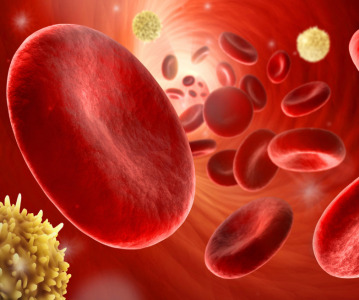New Method May Lessen Breast Cancer Drug’s Side-Effects

A drug that has proven effective in the prevention and treatment of breast cancer, but with serious side-effects, may be delivered effectively through the skin using a new topical drug-delivery system. Endoxifen, a commonly used hormone therapy for breast cancer, has also been shown to prevent the disease. However, taken orally, the drug can cause side-effects such as hot flashes and vaginal atrophy, along with increased risk of endometrial cancer and stroke, that leave it wanting as a routine method of chemoprevention.
University of Illinois at Chicago researchers, in collaboration with Northwestern University clinicians, developed a chemical encapsulation for endoxifen and showed in laboratory studies that it may be better than some other techniques used to help the drug cross the skin barrier. The study was published in the journal Advanced Functional Materials in May.
Delivering the drug directly through the breast may reduce the number of mastectomies while lessening the side-effects of oral endoxifen, says Seungpyo Hong, assistant professor of pharmaceutics and bioengineering at UIC and lead author of the paper. Endoxifen, a more active form of its chemical-cousin tamoxifen, must cross multiple layers of skin to reach the site where it can prevent breast cancer, Hong said.
The drug cannot pass through skin layers without the use of penetration enhancers. Hong and his colleagues created dendron-based micelles — essentially, specialized bubbles — to encapsulate endoxifen. They used hairless mouse and human skin samples to test the ability to cross the skin barrier as compared to unencapsulated endoxifen.
"We found that dendron micelles can achieve sufficient loading, enhanced skin permeation, and controlled release of endoxifen, without losing its efficacy, compared to free endoxifen," Hong said.
A water-soluble drug formulation used by the researchers allowed the dendron micelles to deliver endoxifen without the use of chemical penetration enhancers like alcohol or detergent. These small molecules, which make the skin more permeable, may cause irritation. The size of the micelle can determine how easily endoxifen permeates the skin and whether it causes irritation. Compared with ethanol and cationic liposomes, the smaller size of micelles (50 nanometers, versus 100 nm for the liposomes) creates a greater surface-to-volume ratio.
Comparing the speeds at which the different methods carried endoxifen across the skin, the researchers found that cationic liposomes transmitted the drug faster but without stably encapsulating the drug. Although slower, the dendron micelles released the drug in a more controlled manner, a potential advantage, Hong said, for a drug intended for chemoprevention. Given that the target recipients are those who have the potential to develop breast cancer, a slow-release system could reduce dosing frequency, which would significantly increase the patient compliance.
Related News
-
News Google-backed start-up raises US$600 million to support AI drug discovery and design
London-based Isomorphic Labs, an AI-driven drug design and development start-up backed by Google’s AI research lab DeepMind, has raised US$600 million in its first external funding round by Thrive Capital. The funding will provide further power t... -
News AstraZeneca to invest US$2.5 billion in Beijing R&D centre
Amid investigations of former AstraZeneca China head Leon Wang in 2024, AstraZeneca have outlined plans to establish its sixth global strategic R&D centre in China. Their aim is to further advance life sciences in China with major research and manufact... -
News Experimental drug for managing aortic valve stenosis shows promise
The new small molecule drug ataciguat is garnering attention for its potential to manage aortic valve stenosis, which may prevent the need for surgery and significantly improve patient experience. -
News How GLP-1 agonists are reshaping drug delivery innovations
GLP-1 agonist drug products like Ozempic, Wegovy, and Mounjaro have taken the healthcare industry by storm in recent years. Originally conceived as treatment for Type 2 diabetes, the weight-loss effects of these products have taken on unprecedented int... -
News A Day in the Life of a Start-Up Founder and CEO
At CPHI we work to support Start-Up companies in the pharmaceutical industry and recognise the expertise and innovative angles they bring to the field. Through our Start-Up Programme we have gotten to know some of these leaders, and in this Day in the ... -
News Biopharmaceutical manufacturing boost part of new UK government budget
In their national budget announced by the UK Labour Party, biopharmaceutical production and manufacturing are set to receive a significant boost in capital grants through the Life Sciences Innovative Manufacturing Fund (LSIMF). -
News CPHI Podcast Series: The power of proteins in antibody drug development
In the latest episode of the CPHI Podcast Series, Lucy Chard is joined by Thomas Cornell from Abzena to discuss protein engineering for drug design and development. -
News Amgen sues Samsung biologics unit over biosimilar for bone disease
Samsung Bioepis, the biologics unit of Samsung, has been issued a lawsuit brought forth by Amgen over proposed biosimilars of Amgen’s bone drugs Prolia and Xgeva.
Recently Visited
Position your company at the heart of the global Pharma industry with a CPHI Online membership
-
Your products and solutions visible to thousands of visitors within the largest Pharma marketplace
-
Generate high-quality, engaged leads for your business, all year round
-
Promote your business as the industry’s thought-leader by hosting your reports, brochures and videos within your profile
-
Your company’s profile boosted at all participating CPHI events
-
An easy-to-use platform with a detailed dashboard showing your leads and performance







.png)